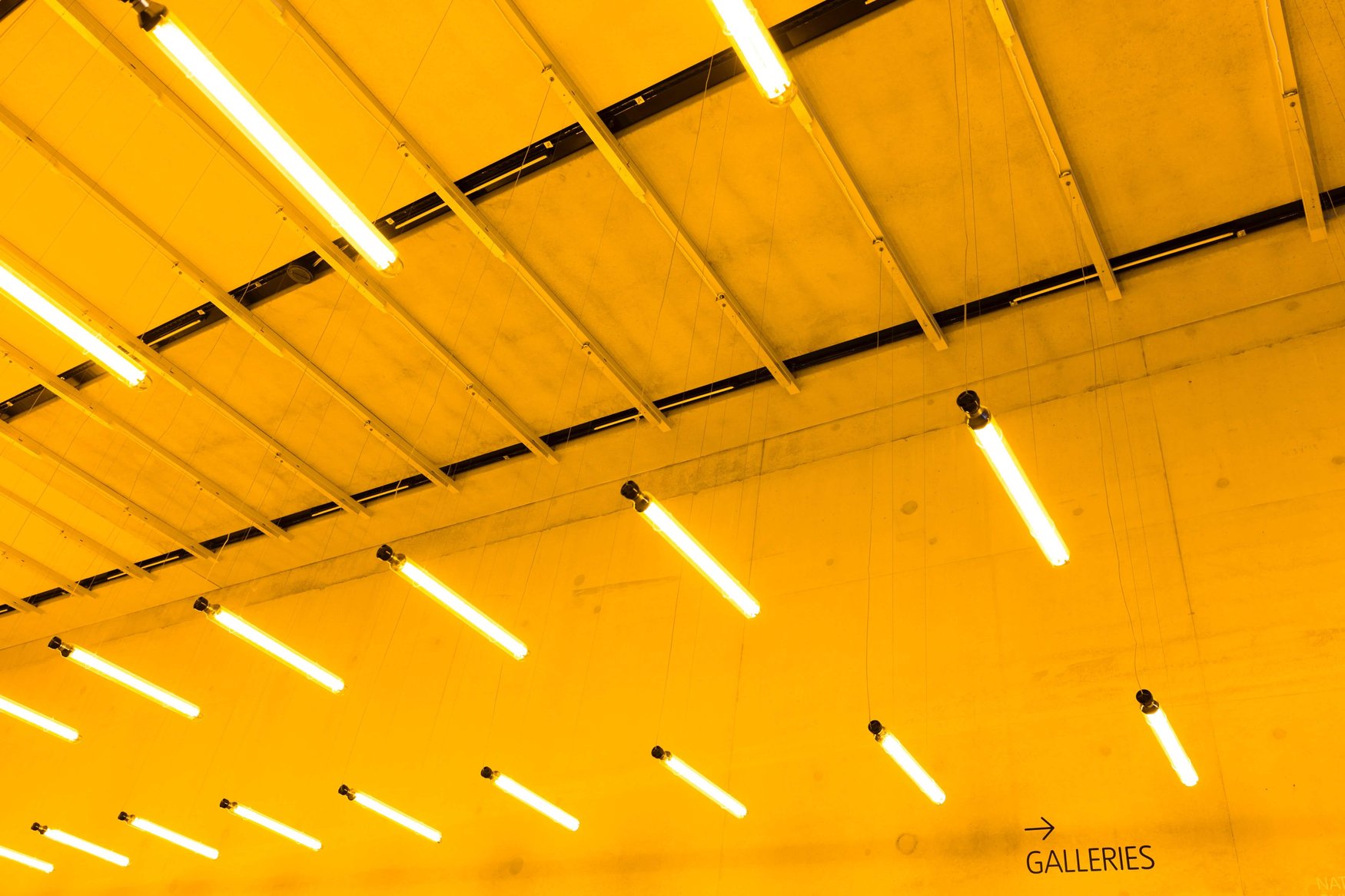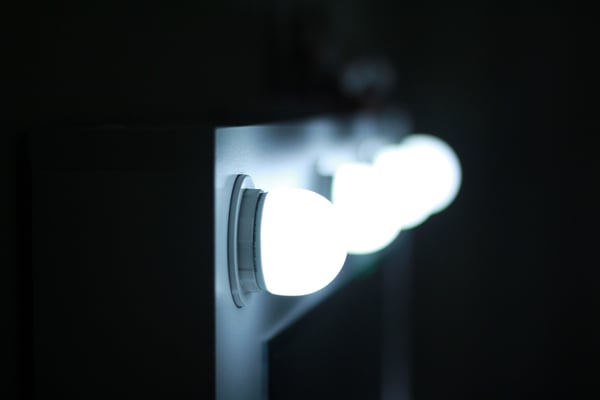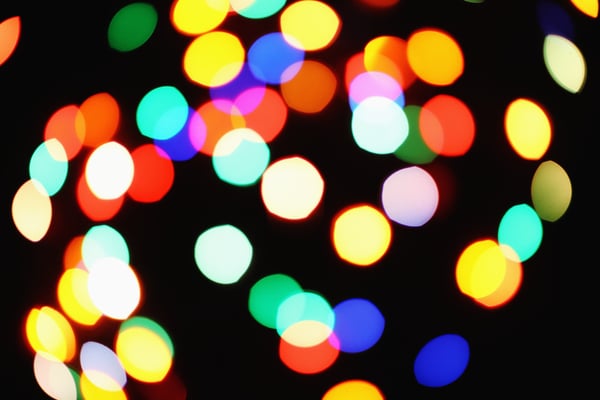7 Benefits of LED Lights: LED Lights Vs Traditional Lighting

Since Edison’s lightbulb, there has been plenty of innovation to make home lighting practical, affordable and efficient. The famous inventor promised the world: “We will make electricity so cheap that only the rich will burn candles”. With LEDs we have substantially reduced the cost of lighting buildings, compared with older traditional lamps.
Get a professional LED lighting design and reduce your power bills.
Still, energy use is a fair chunk of the average family budget, estimated at around $230 billion per year. That’s why switching to energy-efficient LED lamps is a great way to reduce lighting energy use and greenhouse gas emissions, while improving comfort.
Compared with traditional lighting, LEDs stands out with a plethora of benefits:
- LED lighting achieves energy savings of 30% to 90%.
- LED lamps work at a much lower temperature, reducing the risk of burns if touched.
- Maintenance-free and easy to install.
- Delivering better lighting quality and visibility.
- Tremendous design flexibility.
- Smart connectivity features.
- Lasting for many years (even decades).
...and the list goes on. In this article, we will walk you through the main reasons to consider an LED lighting upgrade if you are a homeowner or property manager.
1) LED Lighting Offers Outstanding Energy Efficiency and Cost-Saving Potential
The number one benefit of LEDs is their energy efficiency.
Once you replace old incandescent, halogen or fluorescent (CFL) lamps with LED lighting, expect energy savings from 30% to 90%.
According to Cnet.com, you should mind lumens and not Watts when dealing with LEDs:
| LUMENS | INCANDESCENT WATTAGE | LED WATTAGE |
| 2,600 lm | 150 W | 25-28 W |
| 1,600 lm | 100 W | 16-20 W |
| 1,100 lm | 75 W | 9-13 W |
| 800 lm | 60 W | 8-12 W |
| 450 lm | 40 W | 6-9 W |
London-based & NICEIC-certified Fantastic Handyman electricians explain what stands behind this energy-saving potential:
- Thanks to technological innovation, today’s LEDs generate light at minimal voltage, have no warm-up time, and use minimal electrical current to light up. On the other hand, their incandescent forefathers convert over 90% of the power into heat and only 10% into light. That is essentially wasted energy and money thrown down the drain.
- Unlike the old bulbs that scatter light in all directions, LEDs emit light in a specific direction, because every bit of light matters. Also, directional light emission turns LEDs into a versatile source with multiple applications. Some examples are task lighting, downlights, spotlights, accent lighting for your home or office decoration, and many more.
- LEDs excel in specific applications such as tasks that require precise color rendering, achieved perfectly with high CRI options like a full spectrum LED strip.
- For a given wattage, LEDs emit 5x to 10x more lighting than traditional types of lighting. Therefore, when comparing brightness, forget about watts. In fact, modern LED technology has changed how lighting products are labeled, emphasizing the true light output in lumens. The bottom line is: the higher the number of lumens per watt, the more efficient the lamp.
- When you invest in ENERGY STAR-certified LED products, this can improve your building energy grade and make you eligible for government-backed rebates. Lighting rebate programs involve requirements and some paperwork, but they contribute to a positive impact on the ROI of your next project.
At first, it seems like LEDs are an expensive choice. No more.

Photo by max malax on Unsplash
While LED bulbs used to cost an arm and a leg a few years back (>$100 per bulb), you can now buy energy-efficient bulbs for less than $5 each.
When you think about the benefits, upfront costs seem higher, but LEDs are a long-term investment. Consider the below table to get a notion what you pay during the lifespan of a bulb:
| Comparison | Incandescent | CFL | LED |
| Bulb retail cost | ~$1.00 | ~$2.00 | ~$5.00 or less |
| Wattage | 60 Watt | 14 Watt | 7 Watt |
| Average lifespan | 1,250 hours | 8,000 hours | 25,000 hours |
| Electricity cost per year (13.2¢/kWh) | ~$8.67 | ~$2.02 | ~$1.01 |
| Lifespan (when used for 3 hours/day, 7 days a week) | ~1 year 1 month 21 days | ~7 years 3 months 20 days | ~22 years 9 months 30 days |
| No of replacement times for 25,000 hours | ~20 times | ~3 times | - |
| Total estimated costs over 25,000h | ~$219 | ~$54 | ~$28 |
| ROI when you buy LEDs | ~$191 | ~$26 | - |
2) LED Bulbs Stand For Longevity
LED sources are prominent because they are long-lasting. Top-of-the-line LED bulbs are solid-state devices lasting for 10 years plus. The longer lifespan also has a positive impact on the environment, since less lamps and fixtures end up as waste.
Unlike traditional lighting sources that fail under extreme conditions, LED fixtures can be built to resist vibration, wind, rain, drops, shocks, and even sub-zero temperatures. The reason behind their longevity is their robust design and durability. LEDs also have heat diffusers and accurate electronic power supplies (drivers), which prevent overheating issues.
Bulb lifespans depend on product quality and operating schedules. However, for similar applications, LEDs last much longer than older types of lighting. The following table summarizes the average longevity for different types of light bulbs:
| TYPE OF LIGHT SOURCE | AVERAGE LIFESPAN (HOURS) |
| Incandescent bulb | 1,000 - 2,500 |
| CFL bulbs | 6,000 - 15,000 |
| LED bulbs | 25,000 - 50,000 (even more) |
3) LEDs Require Minimal Maintenance

Photo by Dmitry Yakovlev on Unsplash
A longer lifetime means less hassle on buying and changing bulbs.
Incandescent bulbs are about 90% less efficient than LED light bulbs, but their service life is also over 20 times shorter. This means you’ll have to replace many of them to achieve the life of a single LED. To put it shortly, the result is a high maintenance cost.
On the other hand, modern LEDs don’t “burn out” or fail unexpectedly. They only lose their brightness with time.
But then, what to expect at the end of their life?
The answer: Faded light.
Usually, when light output of an LED bulb decreases by around 30%, it will give you a clear sign that it’s time to install a new one.
4) LEDs Are Easy and Safe to Install
Previously, the number one challenge to use LED lighting was the installation process.
The connection procedure for some older lamps types is complex. For example, HID and fluorescent lamps require a ballast to regulate the power supply. In these cases, the expert help of an electrician in necessary to do the wiring.
Luckily, it’s easier to install LED lights today. No worries if you want to fit them into the traditional light bulb sockets. LEDs are available compatible versions for all the main voltage systems, so you don’t need a transformer for LED lighting to work correctly.
Unlike traditional lighting bulbs, most LEDs operate a low temperatures, reducing the risk of burns or starting a fire in your home or office.
This makes LED lighting much safer to install and use. Some LEDs are designed to use the same power supplies and sockets as older lamp types, and you can change them yourself. Don’t approach the situation blindly, though - consider the benefits of working with a certified electrician to prevent any accidents and keep you out of harm.
5) Many LED Lights Are Dimmable
If you cannot dim your lighting system, you lose on both comfort and energy. Dimmers allow you to adjust the lights below 100% output. The lower the percentage, the bigger your savings. With the exception of incandescent bulbs, most traditional lamp types cannot be dimmed.
Even if incandescent light bulbs are dimmer-friendly, they are still inefficient. LEDs let you adjust brightness while consuming over 80% less energy than incandescent lamps.
The concept of daylight harvesting is very promising: sensors are used to measure how much natural light is available, and LEDs are dimmed accordingly. This way, they only operate at full brightness when there is no daylight available.
6) LEDs Focus on Light Quality
If you can’t tell the difference between white- and gray-colored objects in the evening, the main culprit could be your current light bulbs. The truth is that bulbs are not designed to bring the full spectrum of visible light. With ever-improving technology, LEDs render color better than their predecessors, helping you distinguish the color of objects while conserving energy.
However, don’t assume all LED products have a high lighting quality. Light bulbs with certifications such as ENERGY STAR have been carefully tested under laboratory conditions. However, there are also low-quality products in the market, and you should avoid them.
If you are a home or business owner in the chase of high-quality visual perception, check the color rendering index (CRI) on the bulb package. As the CRI becomes higher, lighting quality is improved.
| LIGHTING TYPE | CRI RANGE | NOTE |
| Incandescent | 95 - 100 | Perfect ability to render color. CRI drops off with temperature rise. |
| CFL bulbs | >50 | Fair rendering qualities. Not as good as incandescent or LED lighting. |
| LED bulbs | 65 - 98 | Excellent CRI rating if you purchase quality LED products. |
Incandescent bulbs offer high lighting quality, but the price to pay is low energy efficiency. One incandescent lamp consumes as much power as 5 or 6 LED lamps of equal brightness.
7) LEDs as a SMART Choice
Forgot to turn off the lights while in a rush? You are not alone and smart LED bulbs can help you. Many LEDs are compatible with smart home systems, which optimize electricity usage and switch off appliances when nobody’s home. Smart LEDs are perfect for tech-savvy users.
Also, Smart LEDs offer a wide range of applications, great customization, and energy conservation to solve problems that traditional systems can’t:
- With an ENERGY STAR certified smart bulb, you can consume up to 90% less energy than with old luminaires.
- You can brighten up spaces with just a tap on a smartphone or tablet, or even with your voice and a wireless connection. This way you can manage your home lighting anywhere and at any time.
- With smart sensors and automatic controls, you can set light to change tone and brightness automatically. You can turn your home into dreamland by using color-changing LED bulb .
- Systems with smart sensors, both in the building and in the lighting units themselves, can perform real-time diagnostics to maintain efficiency.
A helpful note: Unlike the standard artificial light sources, certain LEDs could pose a problem for good sleep. According to The Sleep Studies, LEDs that produce blue light can affect attention, reflexes and your overall mood.For this reason, LED lamps with warm yellow tones are recommended for bedrooms and hotel rooms.
Conclusion
If you are considering a lighting upgrade project, LEDs offer many benefits over older types of lamps. LED lighting is energy efficient, long-lasting, and compatible with mobile devices and smart home systems. To ensure the highest efficiency and safe operation, it’s always best to look for professional guidance for electrical installations.
New York Engineers
New York Engineers was founded by Michael Tobias, PE, LEED AP, CEM, formerly of Joseph R. Loring & Associates and Herbert Kunstadt Associates, where he was Principal. A strong proponent of emerging green technologies, Michael’s firm resonates with his vision, which is prominently displayed in all projects undertaken by New York Engineers. We operate nationwide and internationally out of our NYC office, offering Mechanical, Electrical, Plumbing, Sprinkler, and Fire Protection Engineering services, as well as Building Condition Assessments & Commissioning, LEED Consulting, Energy Modeling, Design Reviews, and much more.
Join 15,000+ Fellow Architects and Contractors
Get expert engineering tips straight to your inbox. Subscribe to the NY Engineers Blog below.



